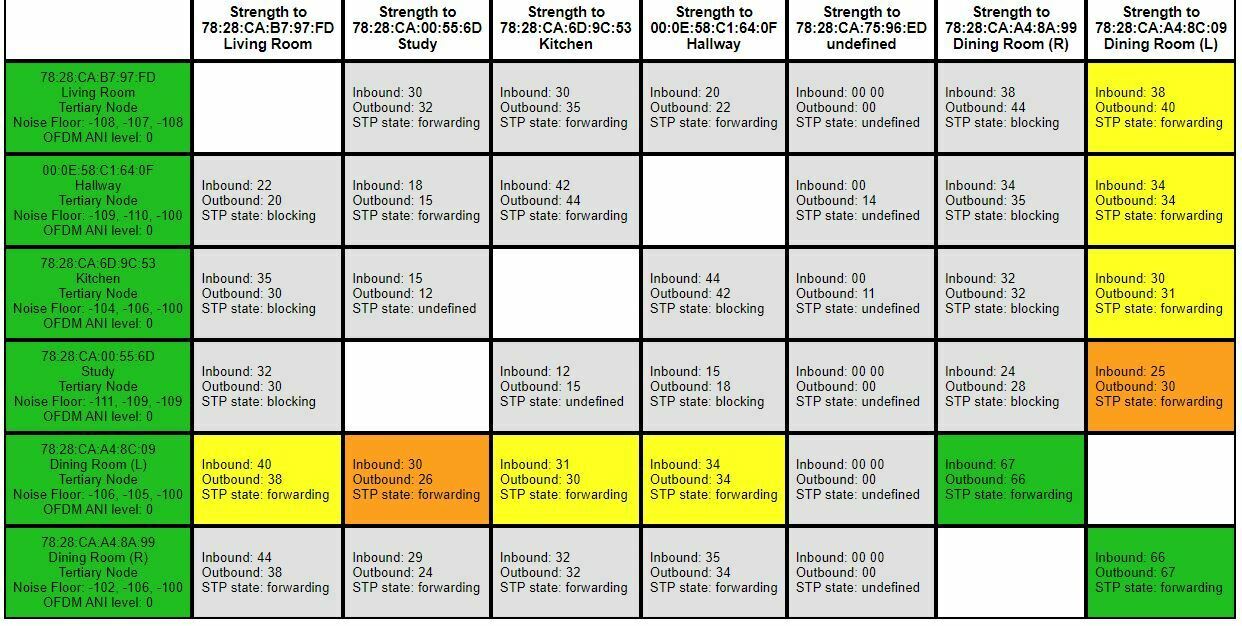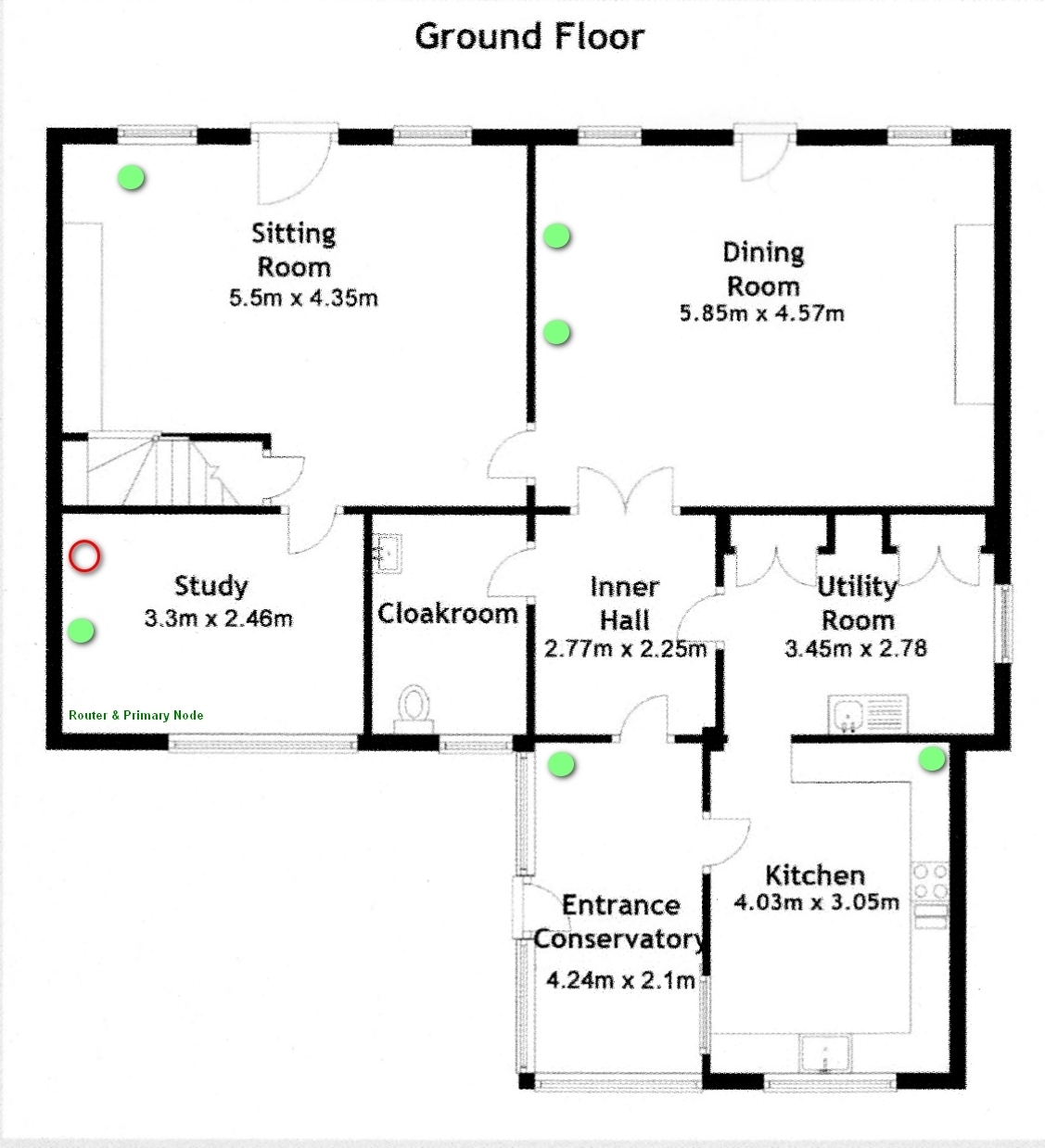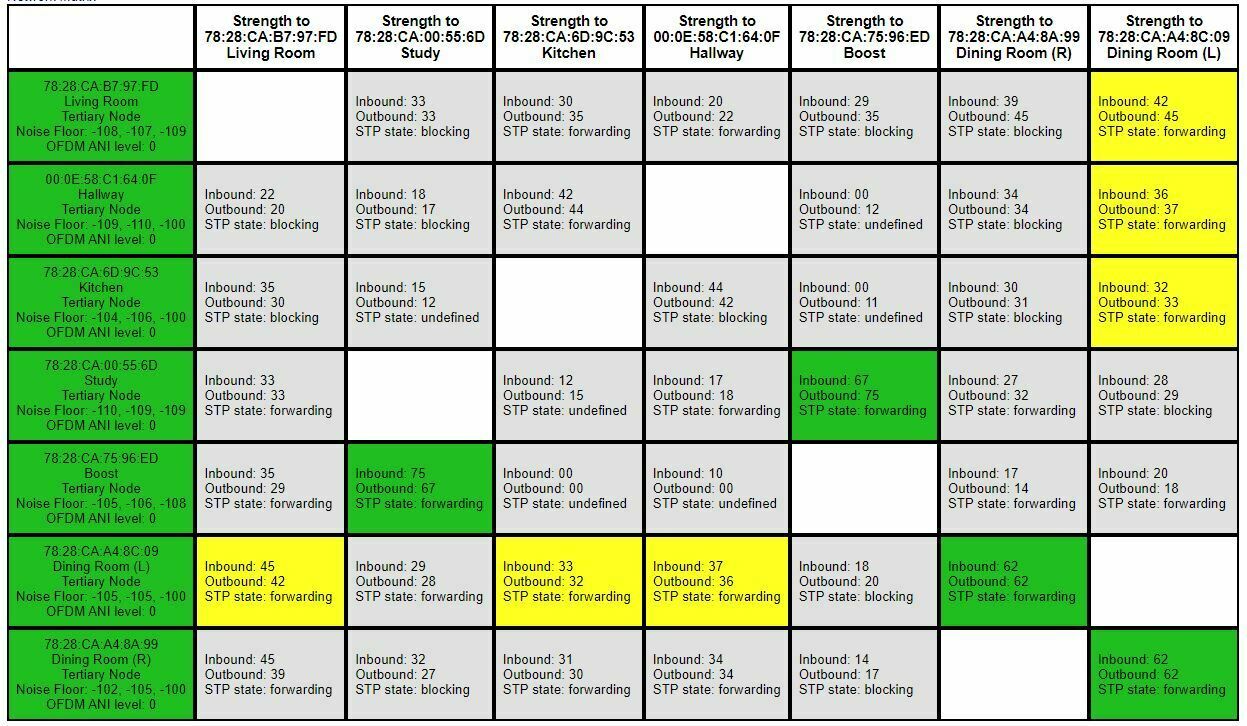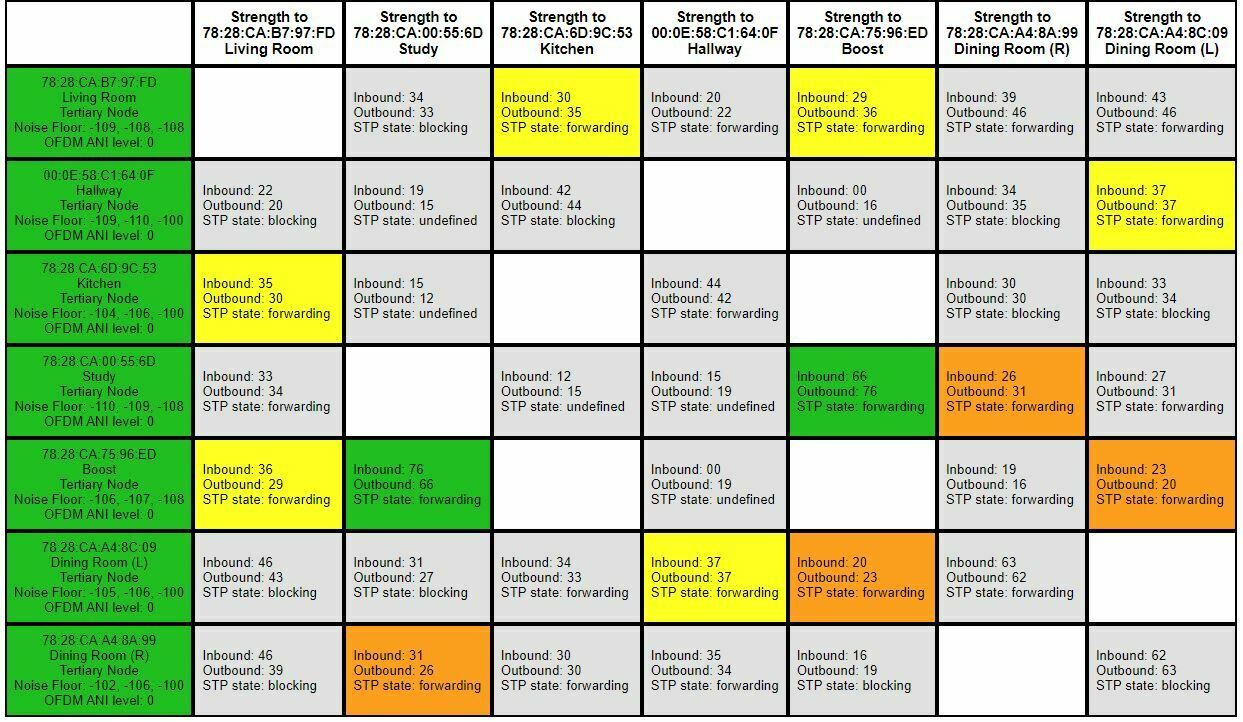I have been struggling with my Sonos system (6 speakers - 1 stereo pair and 4 separates together with a Boost) for 2 years now and still do not have a reliable system without dropouts. I have places a couple of related questions here and spoken to Sonos tech service numerous times.
My router feeds the primary node of the Tenda Mesh system by ethernet and I have managed to hard wire all of the speakers to other Tenda nodes. I have tested this with and without the Boost and with the WiFi turned on or off on all speakers, but still cannot get a reliable system free of dropouts
My question is what is the best way to connect the system to the mesh and router and do I need the Boost? The network matrix shows the Boost to be doing little or nothing to stabilise the system and disconnecting the Boost seems to make little difference.
I would be grateful for any help as, after 2 years I am pretty close to parting company with Sonos, as I want to listen to music, not constantly fiddle with the system.
How to set up Sonos on a Tenda Mesh system (with or without a Boost)
 +1
+1
See how that performs. Everything is now a single wireless hop out from the wired node. For grouped play, start with Dining Room and add the others.
 +1
+1
This is what it looks like with the Boost. As you surmised the Study has connected to the Dining Room Left:

I’m familiar with “dense”. For a while I was living in a house started in 1788.
Is that Dining Room Tenda unit wired to the primary node? In your current test setup, try moving BOOST to the Inner Hall.
Depending on house construction a contrarian approach could place a couple BOOST’s on the floor above or below.
If the Boost is in the same room as the Study speaker then the Boost appears to be superfluous. Study could be wired instead.
However, wiring in both the study and the dining room puts the Tenda wireless backhaul back into the picture. Try disconnecting the Boost from power entirely. Leave the study speaker wireless; it will connect to Dining Room (L) with a low-but-possibly-viable signal strength.
(Wiring to only one Tenda node should work, since the WiFi mesh simply provides the internet connection.)
 +1
+1
I should probably tell you about our house: it is around 200 years old and stone built, with some of the external walls 18” thick. The internet connection and router are in the Study, which is fairly close to one end of the house (and of course the Boost is also in the Study as it is connected to the Tenda primary node. Here is a plan of the ground floor, where all the Sonos equipment is located:

The green spots are Sonos speakers, the red circle is the Boost unit connected to the primary node and the internet and router are in the corner of the Study. Entrance/Conservatory contains the Hallway speaker and is glazed. All other walls are stone or brick, with the external ones particularly thick (18” or so). Do you think I am asking too much of the system, given the type of house we have?
Taking on board your earlier comments about the Dining Room Left speaker I have hard wired it with ethernet to the Dining Room Tenda node. This seems to have improved things:

but the Boost still seems to be contributing little.
In terms of noise and interference your Network Matrix is remarkably clean. As a test, move a speaker closer to the Dining Room. Or, if you have a long network cable, wire another speaker and move the wireless BOOST. This will simulate adding another BOOST. I can imagine that as “water bags” (humans) move around that the signal level could drop. I’ve never seen a wireless unit report a level much below 20 because the unit will disappear at that point.
We cannot rule out some sort of goofy, intermittent hardware issue.
In some respects you are fortunate that your units are older because the newer units do not report much, if any, data in the Network Matrix. You can look at /proc/auth_rincon/status and /sbin/ifconfig for each player in the Network Matrix. The data is a mess, but PHY errors, dropped, etc, are a hint about which players are struggling the most. (unfortunately, this not documented)
SONOS support has better access to network data if you submit a Diagnostic.
Edit: In some respects this is an echo of ratty’s suggestion. He types faster and I’m distracted by other “fires” while typing.
The units do seem to be quite widely spaced out. 3 nodes -- Kitchen, Hallway and Dining Room (R) -- are opting to connect to other wireless nodes, rather than to the Boost directly. Kitchen can’t detect the Boost at all. Multiple wireless hops will cost SonosNet bandwidth.
As for grouping, the units will try and stream directly peer-to-peer, though you don’t see these adhoc connections in the matrix. Low signal strengths clearly won’t help. It’s generally best to start a group from a wired node, or if none a wired then from a wireless node with a good signal strength.
It’s difficult to make definitive recommendations without understanding the geometry of the house, but a second Boost, placed somewhere central might help. On the other hand it could be completely ignored. In some circumstances there can be a way to force its participation, but given the presence in your case of other STP-active components in the network (everything Sonos is “tertiary”) such a move could open a can of worms.
As an experiment you could temporarily substitute the Kitchen player for the Boost as the wired component, then position the Boost, wireless, somewhere in the middle of the house. See what happens to the matrix. If that looks like a promising approach, buy a second Boost and play around. You could always return it to Sonos within the standard period.
 +1
+1
Thank you again for your help.
My ambition(!) was to play to all units simultaneously, but have scaled back and am trying to use group(s) with fewer speakers, to try to keep the traffic level down.
Certainly a group with Dining Room and Sitting Room was dropping out earlier today, so that might be the issue.
No obvious interference, though this is just a snapshot. The signal to Dining Room is weak, especially the left unit which is typically the Group Coordinator of the pair.
When things fall apart which room(s) are playing? And if it’s a group which is the first room in the list, to which the others were added? As it stands, a group which started with Dining Room could easily struggle.
 +1
+1

Here’s the matrix. I am playing FLAC files from network attached hard drive.
I have avoided channel 6 as the Tenda Mesh is locked to this channel, and have avoided channel 11 as I have home security cameras which are fixed on that channel. So I think I have to stick with channel 1. BTW I have also tuned off wireless on the router to avoid conflicts, as the connection between router and mesh primary node in ethernet.
Post a screenshot of the network matrix.
Have you tried different SonosNet channels? What channels/widths does your WiFi use at 2.4GHz?
What source are you playing? Do you get the same errors with all sources?
 +1
+1
Thanks for the suggestions guys - I have connected up as suggested, with the Boost hard wired to the primary node of the Tenda Mesh and the speakers all relying on SonosNet , and although the system network looks better (from the network matrix) I am still getting “network connection speed insufficient to maintain playback buffer” as well as “the song is not encoded correctly” (although it will play the same song a few minutes later).
There is nothing which seems to provide reliable playback on my Sonos network.
Don’t know where to go next.
You could use multiple BOOST’s. Wireless BOOST’s should be placed about midway between a good coverage area and a poor coverage area. SONOS will form its own private, designed for purpose mesh.
I’m not sure why GS suggested wiring the Boost to the main router. By default the Tenda primary will also contain a router, so the Sonos system would be inaccessible from the Tenda WiFi. Follow his second option and wire the Boost to the Tenda primary.
As for the current arrangement, it’s really asking for trouble to wire Sonos units to multiple wireless WiFi mesh nodes. With the Sonos radios disabled, the mesh backhaul has to carry all the traffic between Sonos players in groups/pairs, and the latency can spike resulting in dropouts. And if the Sonos radios remain enabled there’s a good chance that SonosNet’s STP could fight with any (R)STP implementation in the WiFi mesh, or whatever loop avoidance technique it uses.
You should only wire Sonos to the mesh primary node (unless of course the mesh secondaries are themselves wired).
 +1
+1
No, I haven’t tried that but will give it a go tomorrow, after beer therapy!
I’ll let you know about success or otherwise. Thank you for taking the time to reply.
Have you tried wiring only the Boost to the router and leaving all other Sonos devices not wired? Be sure that you also keep WiFi enabled on ALL devices.
If this doesn’t work, try wiring the Boost to the primary node and leaving all other Sonos devices not wired. Again, keep WiFi enabled on all devices.
Reply
Enter your username or e-mail address. We'll send you an e-mail with instructions to reset your password.
